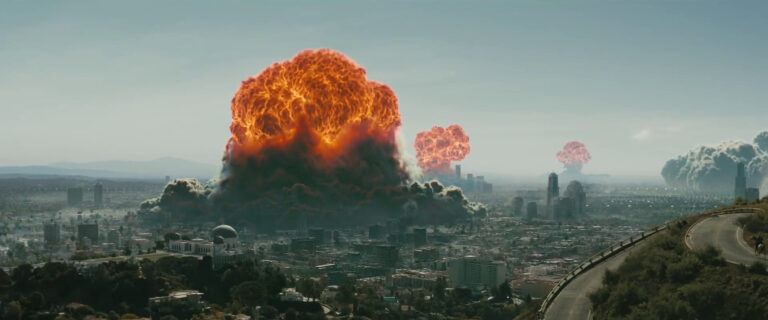So you’ve heard there’s going to be an eclipse have you? Yep. You, me, everyone else, and their momma. Fortunately for me, I’m a huge space geek so I’m pretty pumped about it, and I’m assuming you are too if you’ve found your way to this article.
As you may know, on October 14, 2023, Earth will experience an annular eclipse. This just means that the sun isn’t fully blocked out – it’s ALMOST blocked out, to the extent that in the direct path, it’ll look like a ring around the moon.
Unfortunately, the closest the “full view” will come to us is San Antonio, TX, and may well be worth the drive. But if you’re like me, ain’t nobody got time for that.
So, the big “ANNULAR” eclipse, to us, will officially be a PARTIAL eclipse – lasting a hair over 3 hours: 10:29am – 1:37pm with the maximum obscuration of 71.32% happening at exactly noon.
Need more information on this event? SAY LESS, I GOT YOU!
Eclipse Viewing Forecast
DATE: Saturday, October 14, 2023 | TIME: 10:29am – 1:37pm | PEAK: 12:00pm

CAUTION: Never look directly at the Sun without proper eye protection. You can seriously hurt your eyes, and even go blind.
2023 Partial Eclipse Timeline
Here’s what to expect, and when. Yeah it’s pretty cool. You’re welcome! These times are specific to Ouachita Parish, BUT, the whole area will be within 20 seconds at the most of the exact times, so you’re good from Bernice to Bawcomville!
| PHASE | TIME | EVENT |
|---|---|---|
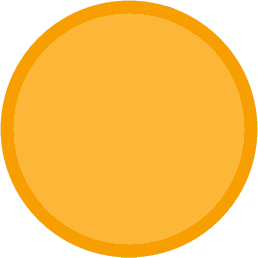 | 10:29 AM | Partial eclipse begins The moment the edge of the Moon touches the edge of the Sun is called first contact. |
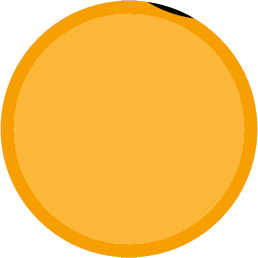 | 10:31 AM | Moon bites Sun Using eclipse glasses, the eclipse starts to become visible to the eye. |
 | 10:57 AM | Obscuration around 20% One-fifth of the area of the Sun’s disk is covered by the Moon. |
 | 11:07 AM | Temperature changes As the Moon covers the Sun, the amount of solar energy decreases. |
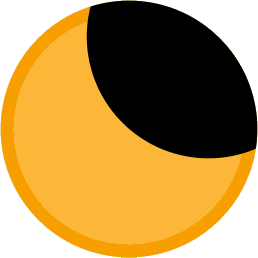 | 11:17 AM | Sharp & blurry shadows Shadow edges that are aligned with the Sun’s narrowing crescent become sharper. |
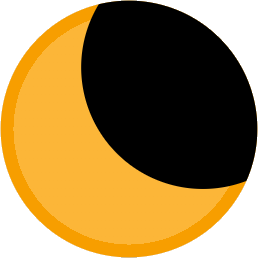 | 11:28 AM | Brightness of sky As the eclipse progresses, the sky starts to become noticeably darker. |
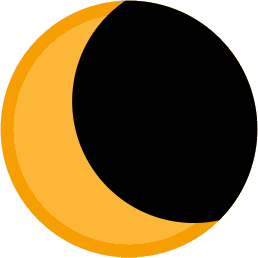 | 11:40 AM | Temperature, humidity & wind Conditions continue to change as the amount of solar energy decreases. |
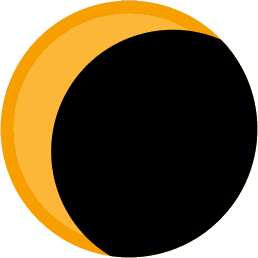 | 11:59 AM | Maximum eclipse The deepest point of the eclipse, with the Sun at its most hidden. |
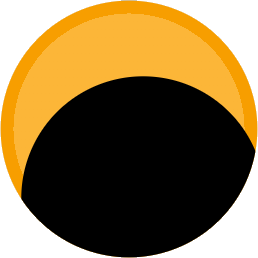 | 12:19 PM | Light levels & temperature The conditions of the sky and surroundings are returning to normal. |
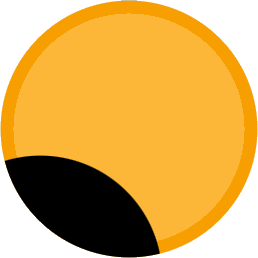 | 1:05 PM | Obscuration around 20% One-fifth of the area of the Sun’s disk is covered by the Moon. |
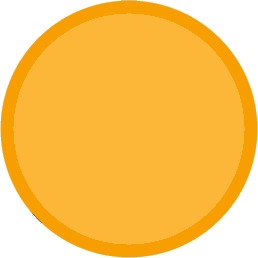 | 1:36 PM | Partial eclipse ends The edge of the Moon leaves the edge of the Sun. |
* Timings for the beginning & end of partial eclipse and maximum eclipse are accurate to within a few seconds. Timings for other events are approximate—they are included here as a rough guide to features that might be observable.
2023 Annular Eclipse paths

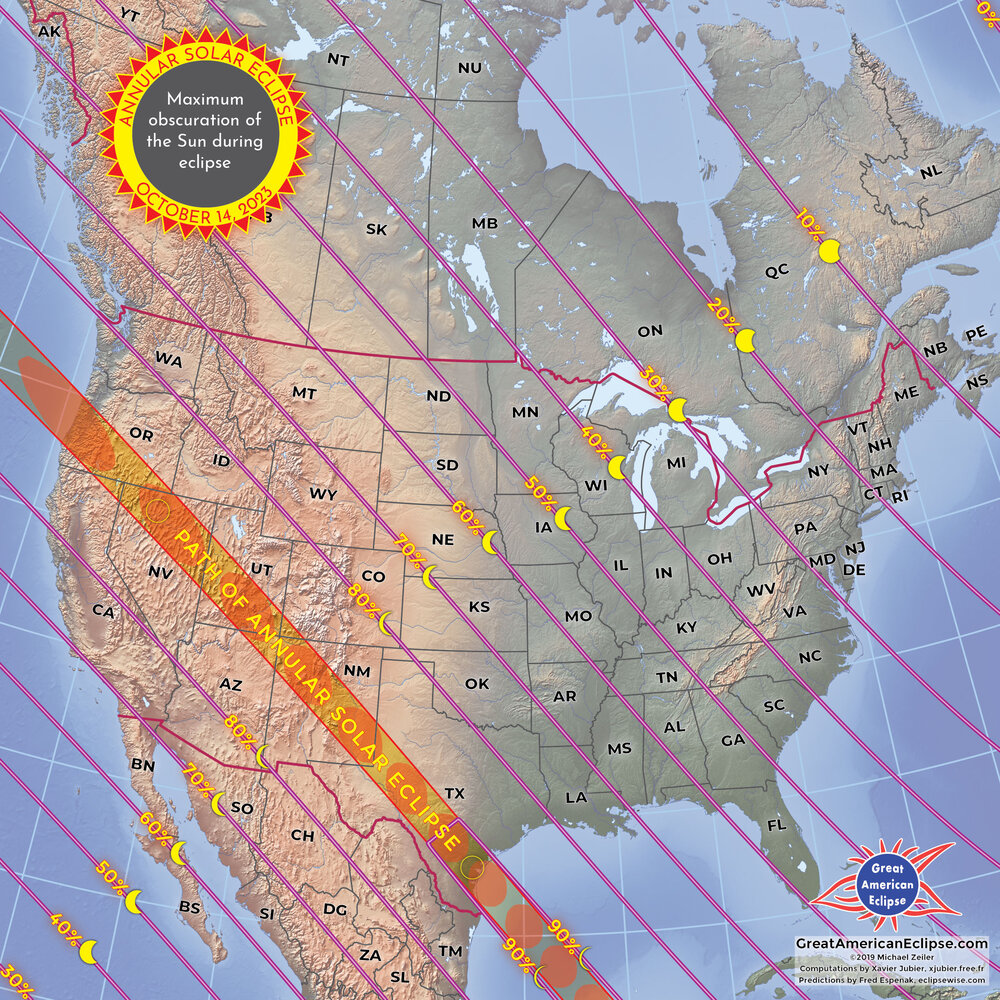
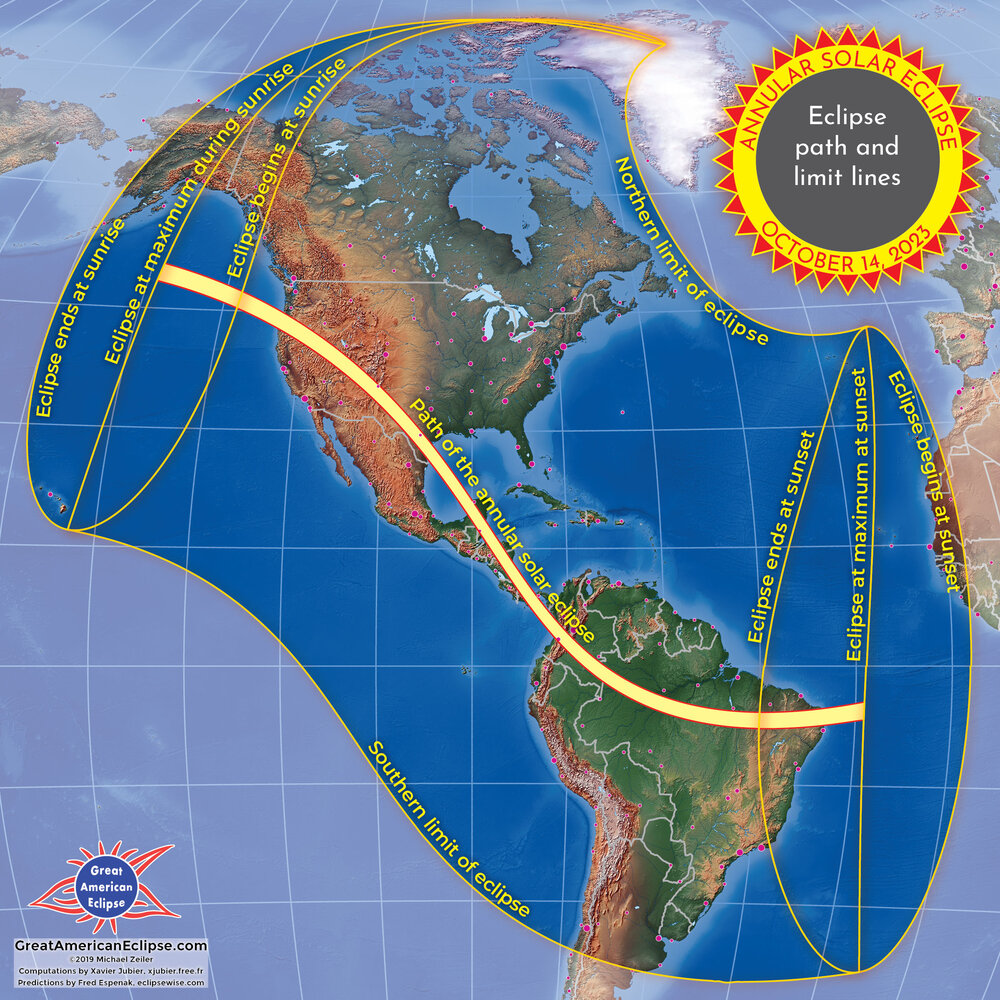
General Eclipse Information
This will be a partial eclipse with a maximum obscuration of 71.32% at exactly noon 12:00pm. It’s “partial” because we are well outside the track of the annular eclipse. If you want the full annular effect, the closest place is San Antonio, TX.
There are four types of eclipses: total, annular, hybrid, and partial.
A total eclipse occurs in average every 18 months when the dark silhouette of the Moon completely obscures the intensely bright light of the Sun, allowing the much fainter solar corona to be visible. During any one eclipse, totality occurs at best only in a narrow track on the surface of Earth. This narrow track is called the path of totality.
An annular eclipse occurs once every one or two years when the Sun and Moon are exactly in line with the Earth, but the apparent size of the Moon is smaller than that of the Sun. Hence the Sun appears as a very bright ring, or annulus, surrounding the dark disk of the Moon.
A hybrid eclipse (also called annular/total eclipse) shifts between a total and annular eclipse. At certain points on the surface of Earth, it appears as a total eclipse, whereas at other points it appears as annular. Hybrid eclipses are comparatively rare.
A partial eclipse occurs about twice a year, when the Sun and Moon are not exactly in line with the Earth and the Moon only partially obscures the Sun. This phenomenon can usually be seen from a large part of the Earth outside of the track of an annular or total eclipse. However, some eclipses can be seen only as a partial eclipse, because the umbra passes above the Earth’s polar regions and never intersects the Earth’s surface. Partial eclipses are virtually unnoticeable in terms of the Sun’s brightness, as it takes well over 90% coverage to notice any darkening at all. Even at 99%, it would be no darker than civil twilight.
Closing
I hope you enjoyed this content! It was kinda rushed so I’m sure there are errors. If you liked it please, by all means, subscribe to my YouTube channel and leave me a comment on the video! You can also contact me directly. Thank you so much for spending your time here, I appreciate YOU!





